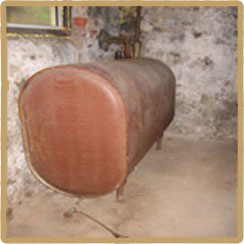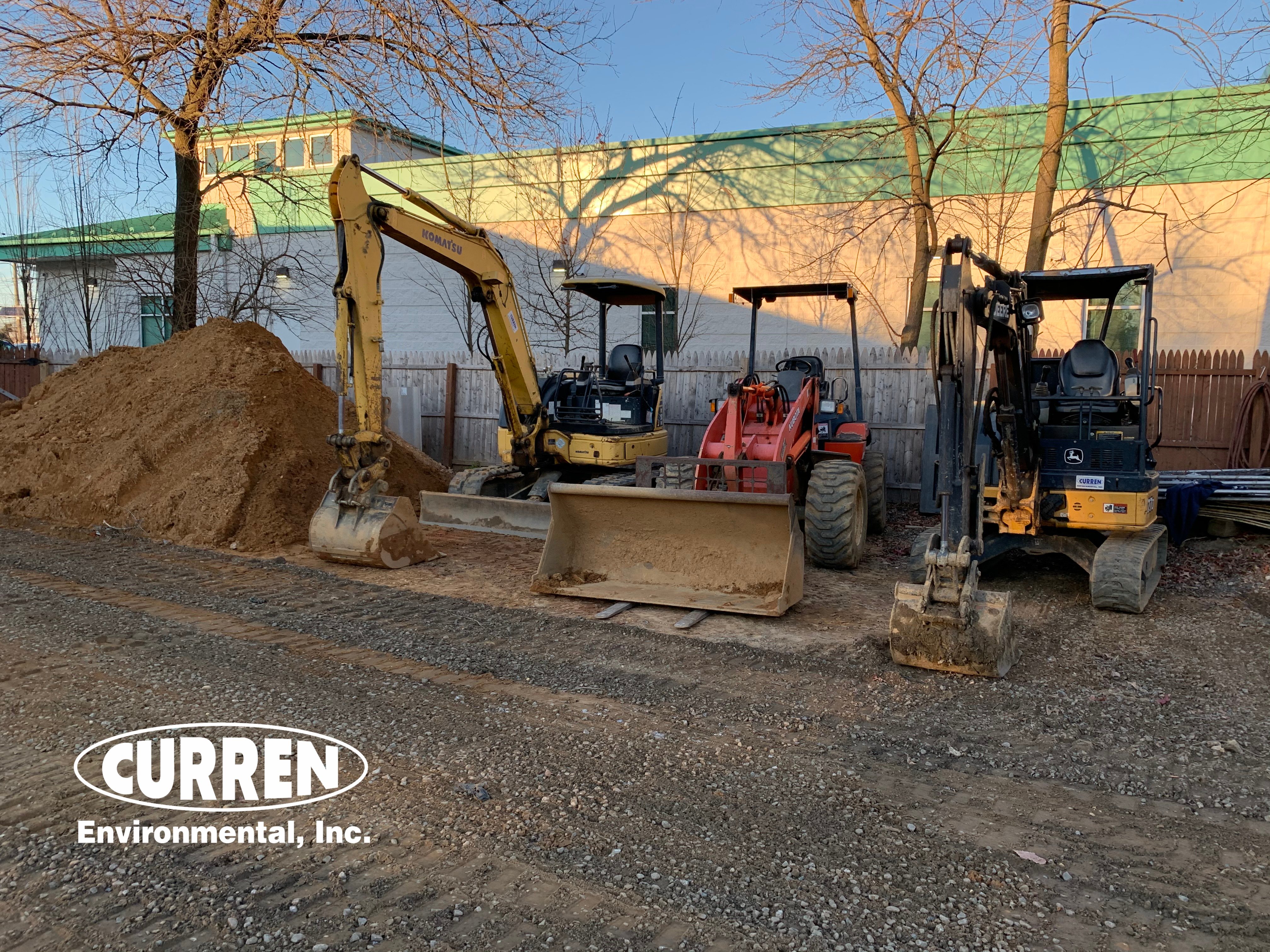Aboveground Storage Tanks (ASTs)
 We all age and wear out, people and oil tanks are no exception. Just as a buried oil tank can corrode and leak, so can aboveground tanks. AST's wear out as part of the natural corrosion practice. They are also usually located in basements or crawl spaces where moisture and humidity are present, which can corrode the tank. Exterior tanks are subject to the elements as well. Did you know if you bought a brand-new heating oil AST, the standard warranty is only 10 years?
We all age and wear out, people and oil tanks are no exception. Just as a buried oil tank can corrode and leak, so can aboveground tanks. AST's wear out as part of the natural corrosion practice. They are also usually located in basements or crawl spaces where moisture and humidity are present, which can corrode the tank. Exterior tanks are subject to the elements as well. Did you know if you bought a brand-new heating oil AST, the standard warranty is only 10 years?

Aside from corrosion, naturally occurring environmental regulations dictating a reduction in sulfur emissions has made both heating oil and diesel fuel lower the sulfur content. What the reduction in sulfur has caused is an environment for bacteria to thrive in oil tanks, this bacterium secretes corrosive compounds that corrode the tank from within.
The point being Aboveground Oil Tanks (ASTs) do leak and when they do, you will end up losing the tank contents, when this happens in a basement or crawl space expect big remediation bills.

This out of the way crawlspace oil teak was in use and had one of the support l legs rust after the tank was filled with oil and the rusty leg broke, damaging the tank which was equally rusty, oil leaked out ran into a sump and the sump pump pumped the oil to the backyard.


If people replaced their tanks rather than believe that tank lasts forever, these tank failures would not be so common.
How do oil tanks leak? Many oil tanks rust from the inside out. This occurs due to the use of low sulfur fuel. Heating oil tanks that have low sulfur fuel can allow microbial growth to occur. Secretions from these microbes can produce acids that can corrode a steel tank. The photo above is the inside of a cleaned and cut open oil tank. What is really interesting is the rust you see on the bottom of the tank. This is the corrosive effect of the microbial activity in the tank. Yes an oil tank can corrode from the inside of the tank.

We also see people try to decommission their own AST and oil gets spilled, the tank ruptures, in short a DIY fail.
Proper Closure of an AST
For Closure of Aboveground Storage Tanks (ASTs), Curren follows American Petroleum Institute (API) standards, to ensure safe and proper tank decommissioning. To ensure a safe working environment, all Curren personnel performing tank removal activities are 40 hour OSHA and Confined Space Entry trained.
No one will dispute experience is invaluable, we train our team on proper AST closure as well as how to avoid the many pitfalls you can encounter when removing a heating oil AST. We also manage the expectations of our clients. Hey we have to work around the tank and carry it outside in pieces, we need working space. Its loud because we are cutting into a large metal drum so to speak. Its going to smell, we are opening a giant oil can, you know those basement windows you never open? Yea we need them to be opened by YOU to air out the space. Yes we have seen husband and wife have words over the oil smell.
Our multi step process consists of the following:
We remove thousands of ASTs every year, and most clients do it because the tank is suddenly leaking, or they need the tank removed to have work done in the area of the tank. Some are savvy purchasers of properties and want the tank removed as part of the sale, they don't want to inherit someone else's problem.

Most people call to say the tank is empty (90% are not near empty and 10% actually are darn close to empty. They think that because they can clear the area around the tank we can just come and pick the tank up and carry it away? So wrong. Tanks are heavy and oil is 7 lbs on average per gallon so 20 gallons = 140 gallons (yea 20 is a low average of what people consider empty.). We legally and safely can't just remove a tank without cutting it open, cleaning all oil and ensuring the tank is cut up so it can't be reused again. Oh year we get people who get a used tank and are shocked it leaked and now they have expensive environmental cleanup and attorneys to deal with.
So a quick rundown of the steps associated with a heating oil AST removal:
Submit and obtain local permits for the removal of the AST. Yes towns want to inspect so make sure it's not leaking and that we remove and fill and vent pipe. Great story about a house that didn't follow this rule.
Oil Company Delivers Oil to a Ghost Tank
We schedule the work on a day the local inspector can inspect. Arrive on site on the day specified and complete a tailgate safety meeting discussing safety concerns of the project.
We then inspect the tank for liquid. Any pumpable liquids found in the tank will be removed. Oil tanks are likes tubes of toothpaste, empty is never 100% empty.

After liquid removal, the tank will be cut open as per American Petroleum Institute (API) Publication 2015, "Cleaning Petroleum Storage Tanks,". Following API standards ensures that the tank is thoroughly cleaned of any residual liquid, which is required by local and state regulations. Tank cleaning will consist of wiping, squeegeeing, and removing all liquids and sludges from the tank. All liquids and sludges generated as a result of the tank cleaning process will be transported from the site to a licensed oil recycling facility.
After the tank has been cleaned, the tank will be cut into sections and removed.

Next the fill and vent pipes will be cut and capped on both the interior and exterior of the foundation wall, if they penetrate any walls. This is performed to ensure that no product piping is left in place. Many a basement has received an unwanted delivery of oil for these ghost tanks, because either the homeowner did a DYI tank removal or they hired a rock bottom company to remove the tank.


The copper supply and return lines that feed the heater will be evacuated with a vacuum and the empty lines will then be crimped on both ends and left in place.
All work gets reviewed by the local construction/fire official who will perform an inspection of the oil tank removal. After inspection, the tank will be removed from the site.
Lastly to help with any future sale of the property Curren will draft a report documenting the tank closure activities and include copies of the local permit and inspection, scrap receipt and liquid manifest with the report to certify the closure was performed. *Did you know when you list a house for sale there is a disclosure document the seller is asked to sign? This form has many questions to answer, one is "Is there are has there ever been any on site oil tanks"? The tank report answers that question.
888-301-1050


